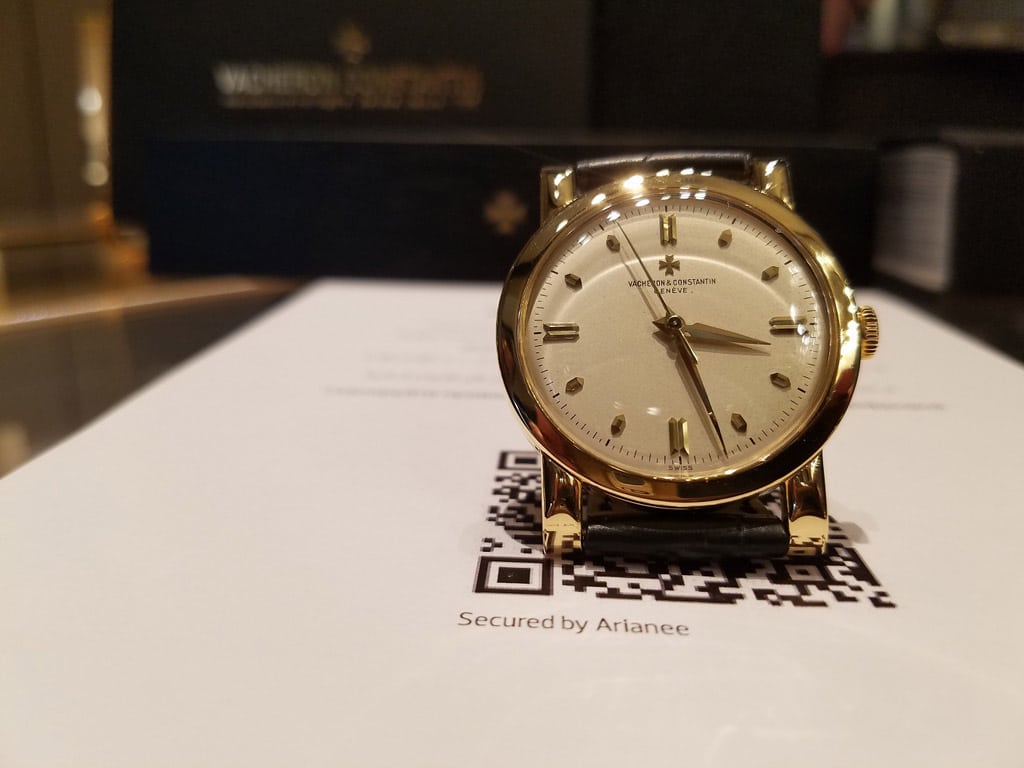
With the Aura Blockchain Consortium, the luxury sector has seized on blockchain to remedy counterfeiting problems. But blockchain has also been used in luxury watchmaking since 2018 to leverage customer satisfaction and loyalty.
This article analyzes the different projects using blockchain that luxury watch brands have launched in recent years.
If you only have 30 seconds
- Blockchain has been used since 2019 in the luxury watch industry to certify the authenticity of watches
- Vacheron Constantin, Ulysse Nardin, and Breitling are the first 3 brands to test the process
- Authenticity is a crucial element in the watch resale process, and the arrival of “superfakes” will complicate the task of resale platforms
- Beyond the certification of origin, blockchain allows luxury brands to know who the successive owners are and start a personal relationship with them via digital mean
Summary

Introduction
The Swiss watch industry is essentially a world where customer relationships are cherished and maintained over long periods. Relationship marketing plays an essential role in developing a brand image that will foster customer loyalty.
Breguet, for example, makes its owner register an essential element of its communication. The brand specifies that the registration is only possible if “You are the first owner of the watch.” This means that Breguet does not know the successive owners of its watches, which is a problem in such an active second-hand market.
[call-to-action-read id=”44209″]
The second-hand luxury market also presents a specific challenge related to the authenticity of the products sold. Second-hand platforms, therefore, take it upon themselves to verify and guarantee the products sold. This service is included in the price paid by the buyer.
The luxury watch industry has for a few years taken the turn of the blockchain to propose a solution to these 2 problems:
- know your customer throughout the life of the product
- guaranteeing authenticity through changes in ownership
Analysis: why blockchain is the future of luxury watchmaking
The use of blockchain by luxury watch brands is mainly a marketing argument.
While for a brand like Breitling, the fight against counterfeiting is a real issue, brands like Ulysse Nardin or Vacheron Constantin are seemingly less exposed. Indeed, counterfeiters prefer to focus on well-known brands. The most counterfeited brands are Rolex, Cartier, Gucci, and Omega.
However, the arrival of “superfakes,” which are similar to the original models, will pose a problem in the future. First for the resale platforms, which will have the worst difficulties in the world to detect counterfeits; then for the brands themselves on which the dissatisfaction of unwary buyers will reflect. Everyone will lose, including the owners of 100% original watches who will see their resale potential decrease. A bit like an old car whose value increases if its history is known, we can reasonably think that a watch “traced” by the blockchain since its first sale will eventually be more valuable.
The other argument in favor of blockchain is the possibility of maintaining a direct relationship with successive owners. The example of Breguet mentioned in the introduction shows that this relationship is not in the genes of watch brands. But the rise of online buying/selling platforms has changed the situation. The brands have realized that a part of the market was escaping them.
Some have taken the gamble of launching themselves on the second-hand market (F.P. Journe with its “heritage” service, for example), others with more technological approaches (see below). These initiatives, whatever their form, all respond to a need: to maintain a direct relationship with all types of customers. Blockchain, as a technological tool embedded in a digital approach, allows establishing this privileged link. The successive owners, until now anonymous, now have a face.

Vacheron Constantin
In 2019, Vacheron Constantin partnered with Arianee to propose a certification solution for its watches via blockchain. The announcement of this partnership was made at the VivaTech trade show in May 2019 in Paris. The Arianee solution had been presented at the same show the year before. The video published at the time (see below) explains the stakes of blockchain in the luxury world.
The operation is simple. The first buyer of the watch receives a Q.R. code that he scans with the Vacheron Constantin app. The certificate, based on the blockchain, is then created. The link between the watch and its owner then becomes unforgeable. If the watch changes hands, the next owner scans the Q.R. code again to register the change.
The blockchain-based certification system is being deployed on several models.
Ulysse Nardin
Ulysse Nardin has been proposing blockchain-based certification of its entire range since November 4, 2019. The team led the technical development from Kering (the luxury group to which Ulysse Nardin belongs) in collaboration with the French startup Woleet.
In the press release, Patrick Pruniaux, Ulysse Nardin’s CEO, said the next step in the rollout would be to allow the certificate to be transferred to successive owners. He also mentioned the possibility of adding to the watch history the various repairs and maintenance operations performed during the watch’s life.
As we can see, we are approaching a model of the same type as a “maintenance booklet” for a car. The buyer of a second-hand model could thus buy, with full knowledge of the facts and not have any unpleasant surprises.
Breitling
Breitling is the latest to embrace blockchain. The stakes in terms of counterfeiting are high for this often copied brand.
Since October 2020, the brand has proposed a digital passport. Based on blockchain, it guarantees the watch’s authenticity and can be transferred in case of resale. As in the case of Vacheron Constantin, the technology is provided by Arianee.

